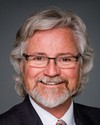As you rightly pointed out, Elissa, the government lost 17% of its public servants. They were in the buildings at 16:53 on that day. They were mostly the managers and the directors, those with whom we normally have interactions. And 40% of the government infrastructure was destroyed. So we're dealing with massive destruction, as we pointed out a number of times.
The IHRC was set up, as you said, in April of last year, right after the New York conference. We've met five times since then. I say “we”; David Moloney, the executive vice-president of CIDA, is Canada's representative to the IHRC.
We were very lucky, in some sense. At the very beginning of the IHRC, we had the opportunity to meet with the former executive director of the reconstruction commission in Indonesia, the reconstruction commission that dealt with the tsunami. Just so we're clear, the reconstruction commission in Indonesia was set up to deal with a very small portion of Indonesia, with a fully functional government in its capital. The IHRC is totally different, and from that perspective, we're working in a very special situation. It's unique. We've never had the opportunity to work within these kinds of parameters.
The executive director of the Indonesian reconstruction commission was very clear about that. While their commission in Indonesia became fully functional after 18 months--it took them 18 months to get fully functional--a year later the IHRC.... It's not perfect. But you have to remember you're bringing around a table 14 Haitian representatives, governments from different countries, multilateral organizations, as well as donors whom I would qualify as non-traditional donors, countries that have never participated in development and want to share and be part of the experience. It's great, but it does make it a little complex.
That being said--as I said, we've had five meetings--the IHRC has a strategic plan. We have very specific objectives. We've approved projects. If you go to the site, you can get much more information on the IHRC.
We are starting to see the results of the preparation that started last April. For instance, if you look at debris removal, the objective for next October was the removal of at least 40% of the debris. We're doing well. We are halfway there. At its last meeting, the IHRC increased the target from 40% to 60%. We're convinced that with further financing, if other donors are interested in putting in some funding, we can achieve that.
On water and sanitation, we're reaching the targets that were set up last August and--


